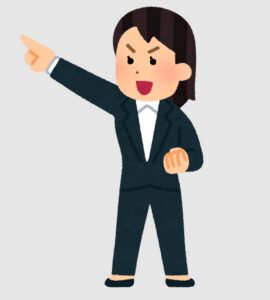「いい土からしかいい木は育ちません|負債をSTOP!リセールバリューで賢く資産を守る」
~前回のつづき~
●値段で選ぶな、価値で選べ~見るべきは売るときの値段だ~

『リセールバリュー』という言葉は
今後色々登場します。
大事な考え方なので
これもよく知っておいてください。
リセールバリューというのは
購入したものを再度販売するときの
価格のことです。
買った時の価格(=買値)と同じものを
他にもう一度売った時の売値との差
のことです。
例えば
(a)2000万円の中古のフェラーリ
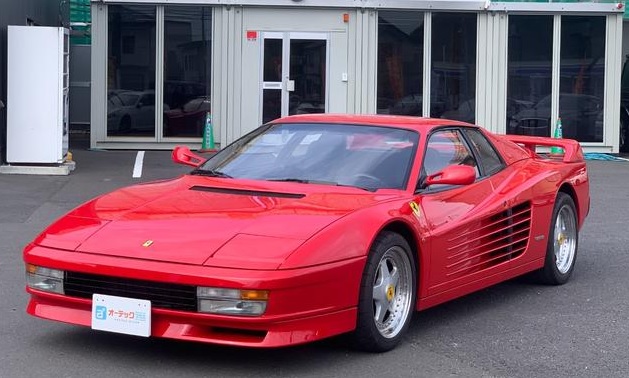
(出典:価格.com)
(b)730万円の新車のランドクルーザー
俗にいう『ランクル』ですね。
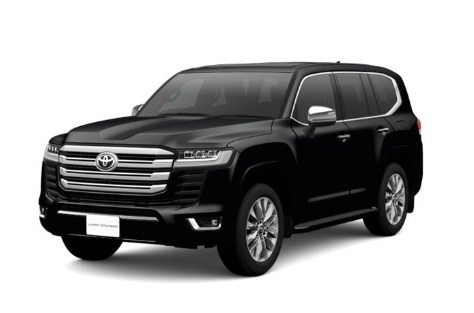
(出典:トヨタHP)
(c)300万円の新車のプリウス
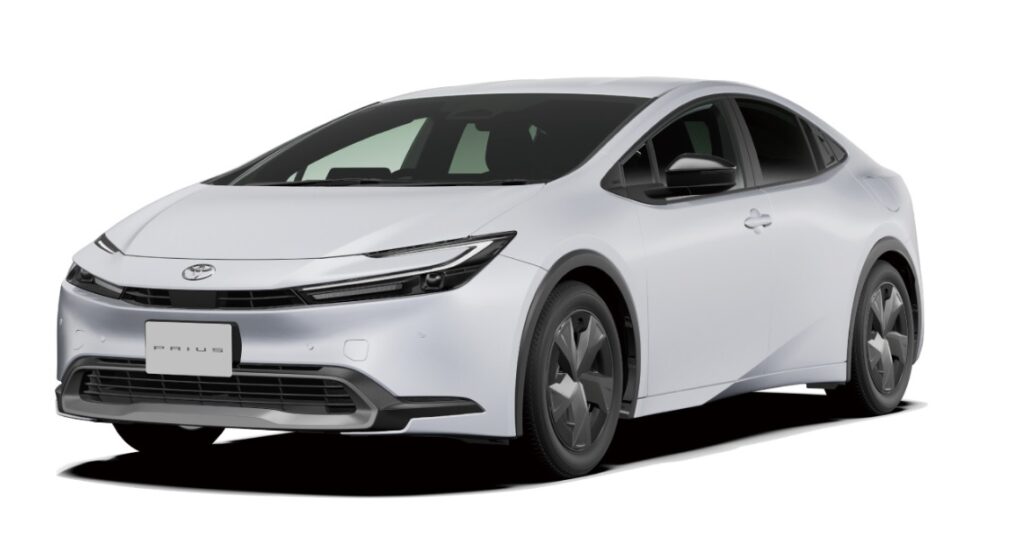
(出典:トヨタモビリティ神奈川HP)
これらの車を
3年後に売った場合
いくらになるでしょう?
(a)2000万円のフェラーリ
(b)730万円のランクル
高いと思いますよね?
(c)300万円のプリウスが一番安い。
普通はそう思いますよね?
では
3年後の価格は一体いくらなのか。
(あくまでも一例ですが)
(a)2,000万円のフェラーリは
1,900万円で売れました。
差額が100万円ですよね?
(b)730万円のランクルは
630万円で売れました。
こちらも差額は100万円です。
(c)300万円の新車のプリウスは
150万円でした。
差額が150万円です。
一番価格的に安いものを
買ったつもりなのに
結局(c)300万円の
新車のプリウスを買ったのが
一番高くつく。

これは一例ですが
滅茶苦茶な価格付けではなく
実際の話です。
例えば
フェラーリなんかだと
すごくリセールバリューがいい。
フェラーリに
実際乗っていた友人の話でも
1,500万円で買って
2年ぐらい乗って
1,400万円で売れたそうです。
100万円の差額。
ランクルは
海外で非常に人気のある車で
新車で買って
3年乗った後に売っても
時期にもよりますが
実際上記のような価格で売れます。
新車のプリウスだと
3年乗ったら約半額です。
これが『需要と供給』です。
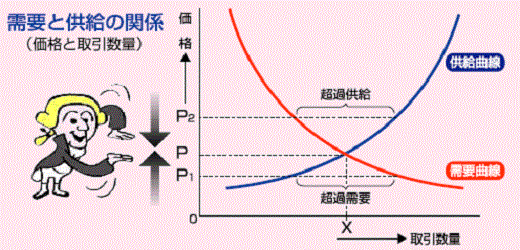
(出典:https://kids-econ.com/think/kurakei/kurakei01.html)
リセールがいい車というのは
中古だったとしても
欲しい人が多い。
ランクルのように
海外で人気があるとか
欲しい人が多い。
大衆車というのは
供給=数が多い。
だから
大体3年でほとんどの大衆車が
半額ぐらいになります。
ベンツやBMWなど
高級車のイメージがあると思いますが

リセールバリューがすごく悪い。
だからベンツやBMWなど
新車で買うというのは非常に損です。
(もちろんその中でも
値段が落ちしにくいものは
あります)
ということは
フェラーリを買えばいいのか?
という話になりますが
実際には
高級車の実用性というのがあり
2,000万円
用意してくださいと言っても
すぐに現金では用意できない。
ということは

ローンを組む必要がある。
また
・立体駐車場には停められない
・ぶつけた時の修理費が高い
等の問題があります。
もちろん高級車でも
乗れば乗るほど
値段は落ちます。
使えば使うほど
値段が落ちるので
その辺りの実用性も
あります。
でも実際周りの金持ちは
ランクルに乗ったり
値段が落ちにくい車に
乗っています。
やはり知恵のある人たちは
車一つにしても

本当に上手に乗っています。
上手に買う。
この『リセールバリュー』
という考え方が
非常に大事です。
賢い人はいい車でも安く乗りつぐ。
お金を持っているから
高級車に乗るのではなく
お金を持っていても
賢い買い物をする。
●“高い”は錯覚、“損する”が現実~値段じゃない、“差額”がすべてだ~

価格と価値ですが
車以外においても
すごく大事な考え方です。
普通の人は価格だけ見て
高い安いを判断する。
でも極端な話
買ってすぐ値上がりするものだったら
借金してでも買うべきです。
1,000万だろうが
1億円だろうが
買った瞬間に
100万円得するのであれば
絶対この価格で売れる
というのであれば
借金してでも買うべきです。
でもみんなそうじゃない。
買った瞬間値下がりして
損するものを
借金して買っている。
これだったら
逆のことをしてますよね?
余談ですが
ロレックス投資なんかだと
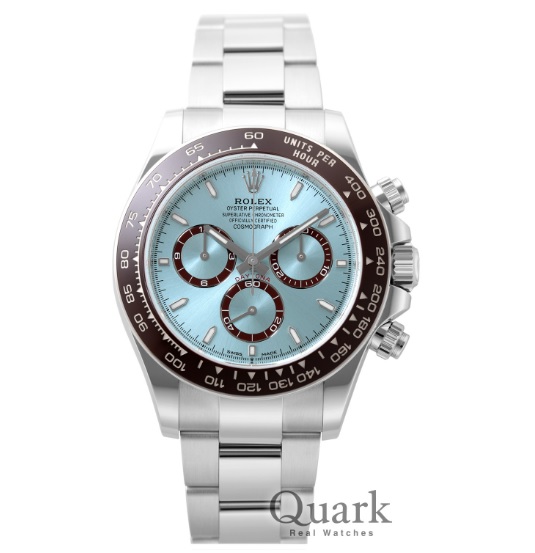
(出典:https://www.909.co.jp/rolex_catalog/daytona_126506_ibl.html)
『デイトナ』という
有名な腕時計があります。
どんどんプレミアが付いて
値段が上がっています。
買った状態で
そのまま車庫や金庫に
しまっておいて
年数が経つほど
値段が上がっていくのを待つ
投資法もあります。
その考え方がすごく大事です。
だからどうしても
車を買うのであれば
リセールがいい車を買ってください。
このリセールという考え方は
非常に大事な概念です。
値段が安いからといって
安いのではなく
リセール=実際の価値
差額を考えるのが
非常に大事です。
ただリセールがいい車というのは
実用性の問題があっても
やはり需要と供給の関係で
プレミアであったりとか
値段が高いことが多い。
ランクル買うと言っても
730万円キャッシュで
用意するの大変ですし
使えば使うほど値段が下がります。
このリセールバリュー
という考え方がすごく大事です。
これ以上値落ちしない車を買う
というのが大事です。
すでに買ってる人は
安い車に買い替えてください。
今の車はドンドン
価値が下がっています。
やはり今乗ってる瞬間も
元々値落ちが激しい車というのは
乗ってる間も下がります。
とはいえローン残債が残っていると
一括で返さなくてはならなくなる
可能性が大きい。
どうしても
一回手元にきた車というのは
手放すのが辛い。
だからそういう人は
今の車を大事に乗り続ける。
定期的に
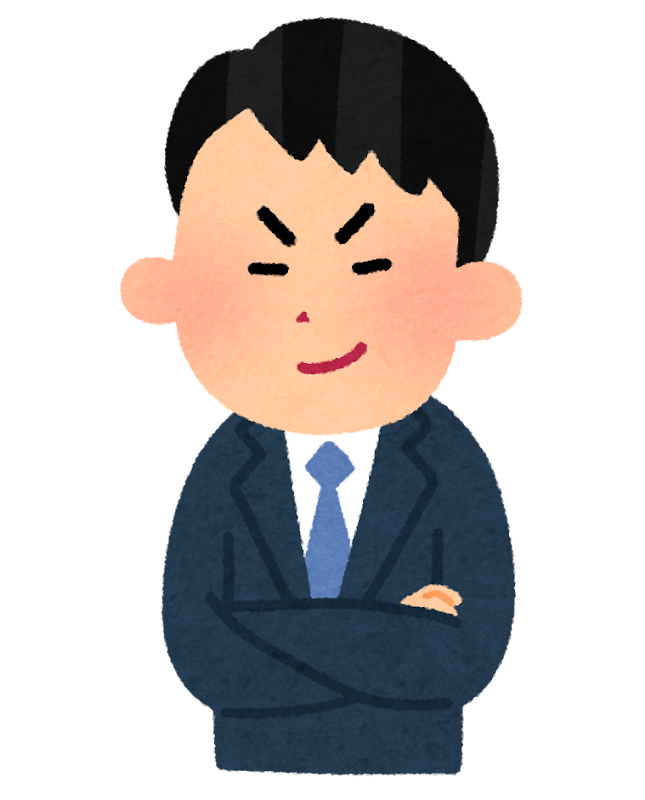
という人がいますが
本当に新車が必要でしょうか?
●10万kmで壊れる?~壊れるのは、整備をサボった人の幻想だ~

車は壊れるんだよなぁ・・・」
そんな話
聞いたことはありませんか?
まるで都市伝説のように
語られるこの説
実は多くの人が
信じているようです。
しかしそれは
必ずしも真実ではありません。
確かに10万kmという距離は
車にとってひとつの節目であることは
間違いありません。
・エンジン
・足回り
・電装系
などさまざまな部品に
それなりの負担がかかっている
時期ではあります。
しかしそれが
『壊れる』ことと
イコールかといえば

決してそうではないのです。
むしろ重要なのは
普段からどれだけ
適切なメンテナンスをしてきたか
定期的なオイル交換
タイヤやブレーキパッドのチェック
バッテリーやベルト類の交換
など必要な整備を
怠らずに行っていれば
10万kmを超えても
車は元気に走り続けてくれます。
実際に
20万km、30万kmと
走り続ける車も
珍しくありません。
タクシーや営業車など
過走行でも問題なく活躍している車両が
その証拠です。
つまり
『10万km=壊れる』というのは
迷信のようなものであり
車の寿命は距離よりも
『整備の質』に
大きく左右されるのです。
大切なのは
車を乗りっぱなしにせず
きちんと向き合ってあげること。
そうすれば10万kmは
むしろ通過点にすぎません。
●STOP!負債!!
負債をこれ以上増やすことなかれ。
今でストップしてください。
消費と浪費を一緒にしない。

混ぜるな危険!です。
再度認識しておいてください。
繰り返しですが
買ったらダメと
言ってる訳ではありません。
順番を変えようということです。
●価値が育たない土に夢は根を張らない~土が腐ってたら何を植えても腐る~
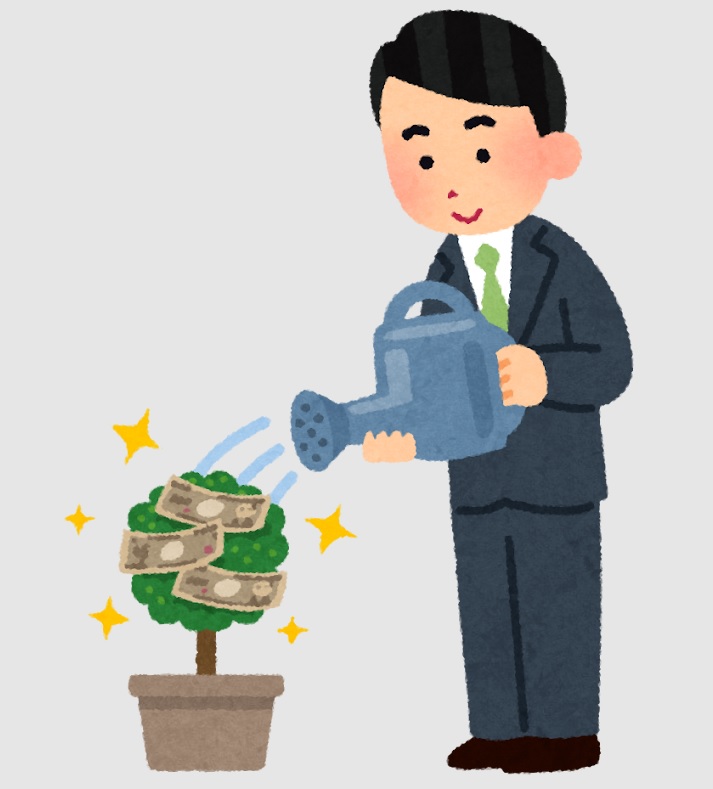
誰もがそう思っています。
でもその木は
どんな土に植えるかで
結果が大きく変わります。
いい木は
いい土にしか育たないのです。
これはつまり
まずは土づくり=出ていくお金を減らすこと
が最優先ということ。
収入を増やすことや
投資を始めることよりも先に
無駄な支出を見直し
土台を整えることが必要です。
出ていくお金を
コントロールできないままでは
どんなに稼いでもお金は貯まりません。
そしてこの土づくりで
特に意識してほしいのが
リセールバリューです。
たとえば車だけでなく
・腕時計
・カメラ
・ブランド品
・不動産
などモノを買うときは
使ったあとにいくらで売れるかを
基準に考えることで
支出が消費ではなく
投資に変わることもあります。
これは
“価格”より“差額”に注目する
という考え方
実質的なコストは
買った価格ではなく
売ったときの差額なのです。
何かを買う前に

と一度立ち止まる。
その視点が
あなたのお金の土壌を
豊かにします。
だからこそ
木を植える前に
まずはしっかりとした土を
耕しておきましょう。
リセールバリューを意識した選択が
将来の資産形成に大きな違いをもたらします。
どうかこの考え方を
忘れずに覚えておいてください。
●まとめ
◆車貸し出しサービス
→空いてる時間の車を貸し出して
少しお小遣い稼ぎをするサイトもある
◆車検代金を見直す
→大事なのは相場を知ること
◆価格と価値
→一緒にしない
◆リセールバリュー
→購入した価格を再度販売するときの価格のこと
◆需要と供給
→賢い人はいい車でも安く乗りつぐ
◆価格と価値
→買ってすぐ値上がりするものだったら買った瞬間に得をする
それは借金してでも買うべき
◆10万kmの伝説
→ちゃんとメンテナンスしてたら車は壊れない
◆STOP!負債!!
→買う順番を変えよう
◆木と土
→お金のなる木を育てるためには
いい土からしかいい木は育たない
Special Thanks college president Ryo.

●おまけ
≪≪perplexityちゃんによる文章まとめ≫≫
物を選ぶ際は「値段」ではなく「価値」、特にリセールバリュー(再販時の価格)に注目することが大切です。
たとえば、車は購入時の価格が高くても、フェラーリやランドクルーザーのようにリセールバリューが高い車なら、売却時の損失が少なく、実質的なコストは安く済みます。
逆に、安い大衆車は数年で価値が大きく下がるため、結果的に損をすることも。これは車に限らず、腕時計やカメラ、不動産などにも当てはまります。
また、「10万kmで車は壊れる」というのは迷信で、日頃の整備次第で長く乗ることが可能です。
無駄な支出を減らし、「後で高く売れるか」を意識することで、家計の土台が整い、資産形成に繋がります。
[1] https://smtrc.jp/useful/glossary/detail?n=3869
[2] https://ja.wikipedia.org/wiki/リセールバリュー
[3] https://221616.com/guide/resale-value/
[4] https://www.athome.co.jp/contents/words/term_3869/
[5] https://resalevalue.jp/article/2933/
[6] https://www.am-one.co.jp/warashibe/article/tsukau-20240403-1.html
[7] https://cmgroup.jp/dictionary/47/
[8] https://www.carseven.co.jp/magazine/news/2269/
≪≪Chat-GPTくんによる英訳≫≫
~Continuation from Last Time~
【Don’t Choose by Price—Choose by Value~What You Should Look At Is the Price When You Sell~】
You’ll be hearing the term “resale value” a lot from now on.
It’s an important concept, so please take the time to understand it well.
Resale value refers to the price at which an item can be resold after purchase.
It’s the difference between the purchase price and the resale price of the same item.
For example:
(a) A used Ferrari priced at 20 million yen
(Source: kakaku.com)
(b) A brand-new Land Cruiser priced at 7.3 million yen
(commonly known as a “LanCru”)
(Source: Toyota official website)
(c) A brand-new Prius priced at 3 million yen
(Source: Toyota Mobility Kanagawa)
Now, if you sold these cars after 3 years, how much would they be worth?
You’d probably assume:
(a) Ferrari (20M yen) and
(b) Land Cruiser (7.3M yen)
are expensive.
And (c) the 3M-yen Prius is the cheapest.
That’s what most people would think.
But here’s a possible outcome after 3 years (as an example):
(a) The 20M-yen Ferrari sells for 19M yen → Difference: 1M yen
(b) The 7.3M-yen Land Cruiser sells for 6.3M yen → Difference: 1M yen
(c) The 3M-yen Prius sells for 1.5M yen → Difference: 1.5M yen
Even though you thought the Prius was the cheapest,
it ended up being the most expensive in the long run.
This isn’t an exaggerated example. It happens in reality.
Take Ferraris, for instance—they tend to have excellent resale value.
A friend of mine bought a Ferrari for 15M yen, drove it for 2 years,
and sold it for 14M yen. Only a 1M yen difference.
Land Cruisers are very popular overseas, and
depending on timing, they can resell for nearly the same value after 3 years.
But a brand-new Prius?
After 3 years, it typically drops to about half its original price.
This is the law of supply and demand.
(Source: [https://kids-econ.com/think/kurakei/kurakei01.html](https://kids-econ.com/think/kurakei/kurakei01.html))
Cars with good resale value continue to be in high demand—even as used vehicles.
Land Cruisers, for instance, are highly sought-after globally.
Mass-market cars, on the other hand, are produced in large quantities.
So after about 3 years, most of them lose around half their value.
Even luxury cars like Mercedes-Benz or BMW may sound prestigious,
but their resale value is often poor.
So buying a brand-new Benz or BMW is usually a bad financial move.
(Of course, there are exceptions—some models retain value well.)
So does that mean you should just buy a Ferrari?
Not exactly.
There are practical limitations to high-end cars:
You can’t park them in multi-level parking garages.
Repair costs are extremely high if damaged.
And few people can instantly prepare 20M yen in cash.
Most would need to finance them via auto loans.
Also, the more you drive these cars, the more their value drops.
Depreciation is inevitable with use.
Still, many wealthy people I know drive Land Cruisers or other cars
with slow depreciation.
Smart people even make wise choices when buying cars.
They know how to buy smart.
That’s why “resale value” is such an important mindset.
Smart individuals enjoy luxury cars without overpaying.
It’s not about buying luxury cars because you’re rich.
It’s about making smart purchases, even if you have money.
—
【“Expensive” is an Illusion—It’s the Loss That’s Real~The Key is Not the Price but the Difference】
Price vs. value is a critical distinction—not just with cars.
Most people judge things solely based on price.
But in some cases, if something increases in value the moment you buy it,
you should consider borrowing money to buy it.
Even if it costs 10M yen or 100M yen,
if buying it earns you 100K yen instantly,
and it’s guaranteed to sell for that amount,
you should absolutely buy it—even on credit.
But that’s not what people do.
Instead, they buy things that lose value immediately,
and they borrow money to do it.
This is financially backwards.
As a side note—there’s such a thing as Rolex investment.
(Source: [https://www.909.co.jp/rolex\_catalog/daytona\_126506\_ibl.html](https://www.909.co.jp/rolex_catalog/daytona_126506_ibl.html))
For example, the famous Rolex Daytona
keeps going up in value due to its limited availability.
Some investors simply store them in safes or garages,
letting the price rise over time.
It’s this mentality that matters.
So, if you must buy a car, choose one with good resale value.
This concept is crucial to understand.
A low price doesn’t mean low cost.
Resale = actual value,
so think in terms of the difference—not just the price.
Even cars with high resale value may have drawbacks.
Still, due to demand and supply, they may command premium prices.
A 7.3M-yen Land Cruiser is no small purchase.
And, yes, it’ll still lose value the more you drive it.
But resale value is a concept you must keep in mind.
Buy cars that won’t depreciate further.
If you already own a car, consider switching to a cheaper one.
Your current vehicle may be rapidly losing value.
Especially if it was already a quick-depreciating model,
the decline continues while you drive.
Of course, if you still owe on your loan,
selling early may require a lump sum payoff.
Plus, once you’ve gotten attached to a car,
it can be hard to let it go.
In that case, simply take good care of it.
You may often hear people say:
> “Maybe it’s time for a new car…”
But ask yourself:
Do you really need a brand-new vehicle?
—
【Breaks at 100,000 km?~Only If You Neglect Maintenance】
> “Cars break down after 100,000 km…”
Have you heard this urban legend?
Many people seem to believe it.
While 100,000 km is a milestone,
it doesn’t mean your car will suddenly fall apart.
Yes, around that mileage:
The engine
Suspension
Electrical components
All start to feel the strain.
But that doesn’t mean your car is doomed.
The key is whether you’ve kept up with proper maintenance:
Regular oil changes
Checking tires and brake pads
Replacing belts and the battery
If these are done routinely,
a car can easily run beyond 100,000 km.
In fact, many cars run 200,000–300,000 km without major issues.
Just look at taxis or commercial vehicles.
They often perform fine with high mileage.
So no—100,000 km does NOT mean failure.
A car’s lifespan depends far more on maintenance quality
than mileage.
The important thing is to care for your vehicle properly.
If you do, 100,000 km is just a checkpoint—not the finish line.
—
【STOP! Liability!!】
Stop increasing your liabilities.
Stop right now.
Don’t confuse consumption with wasteful spending.
Mixing the two is dangerous.
Once again—
This doesn’t mean “never buy things.”
It just means: change the order in which you buy.
—
【A Tree of Wealth Won’t Grow in Rotten Soil~If the Soil Is Bad, Anything You Plant Will Rot】
> “I want to grow a money tree!”
Everyone thinks this way.
But the result depends on what kind of soil you plant it in.
A good tree only grows in healthy soil.
In other words, first prepare the soil = reduce your outflow.
Before increasing income or investing,
you must first fix your spending habits.
No matter how much you earn,
if you can’t control what’s going out, you’ll never save.
And the biggest thing to focus on in this “soil prep”?
Resale value.
Not just for cars, but also:
Watches
Cameras
Luxury goods
Real estate
When you buy something,
ask how much you can sell it for afterward.
If the resale value is high,
what would normally be “spending” becomes “investing.”
It’s about focusing not on price,
but on the difference.
Your actual cost is not the purchase price,
but the gap between buying and selling.
So before you buy, ask yourself:
> “Can I sell this for a good price later?”
That perspective will make your financial soil rich and fertile.
Before planting your tree,
prepare your soil well.
A mindset focused on resale value
can make a massive difference in long-term wealth-building.
Please don’t forget this concept.
—
【Summary】
Car-sharing services:
Earn a little side income by renting out your car during idle time
Re-evaluate inspection (shaken) costs:
Know the market prices—it’s important
Price vs. Value:
Don’t confuse the two
Resale Value:
The price at which you can resell something after buying it
Supply and Demand:
Smart people drive great cars cheaply
Price vs. Value:
If it gains value the moment you buy it, it’s worth buying—even with debt
100,000 km Myth:
If you maintain your car well, it won’t break down
STOP! Liabilities:
Don’t buy recklessly—change your order of purchase
Tree and Soil:
To grow a money tree, you need fertile soil—meaning strong financial habits
Special Thanks OpenAI and Perplexity AI, Inc



